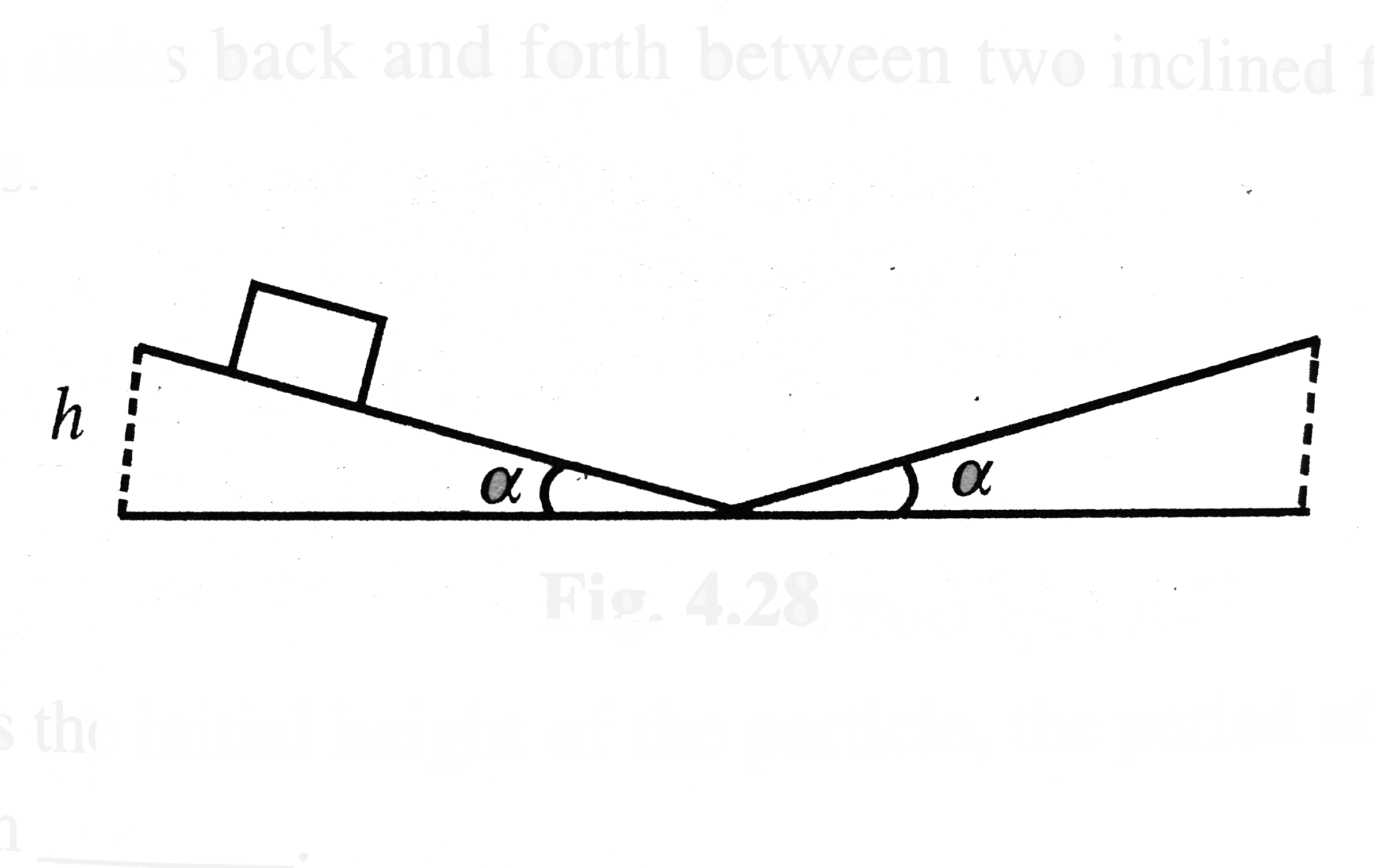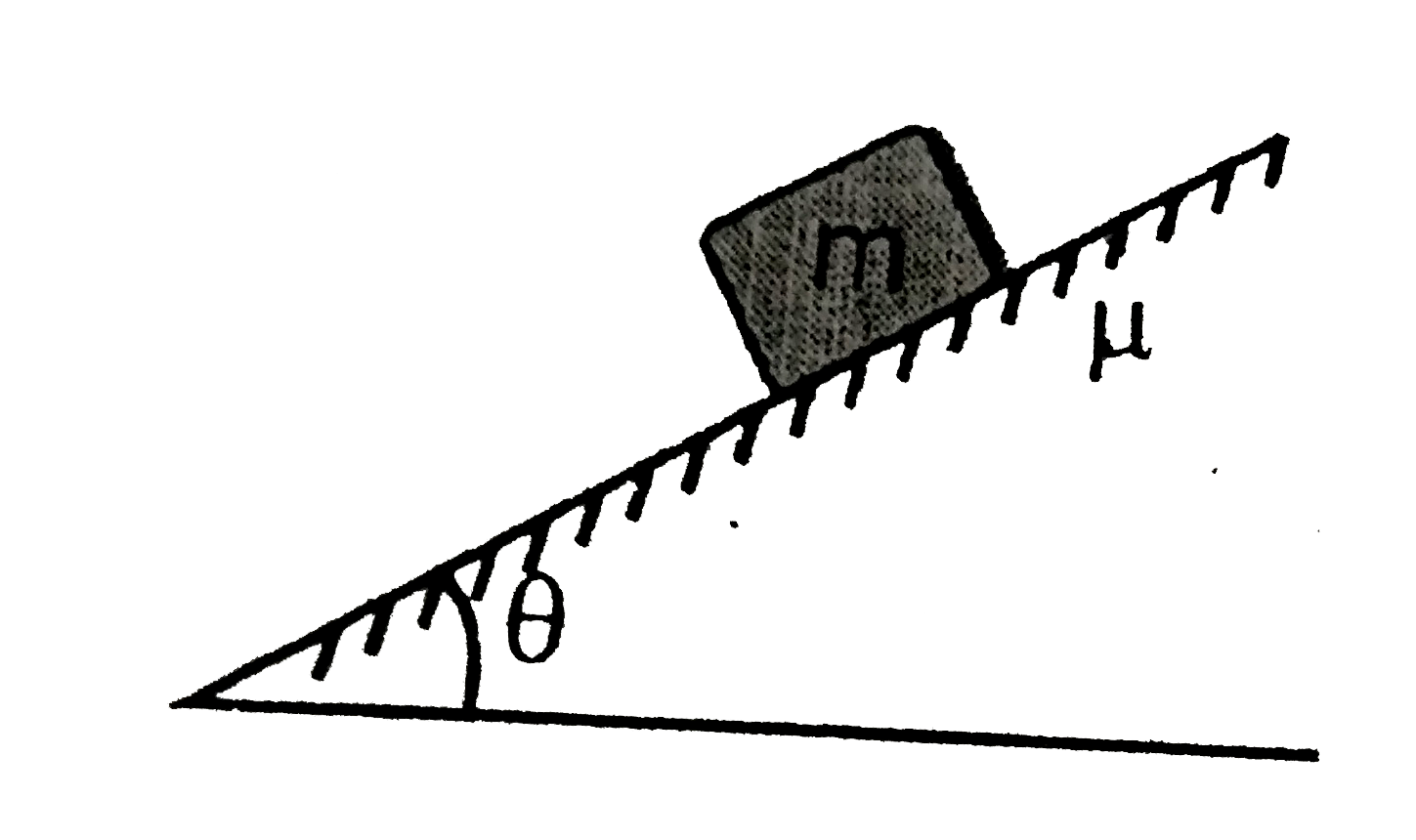A partical slides back and forth between two inclined friction lessplanes.

a. If h is the initial height of the partical, the period of oscillation……
b. Is the motion oscillatory? Is it SHM?
a,b
b,c
c,d
a,c
The correct Answer is:D
t=√2lgsinθ,l=hsinθ
T=4t=4sinθ√2hg
Topper's Solved these Questions
- BOOK - NARAYNACHAPTER - OSCILLATIONSEXERCISE - NCERT BASED QUESTIONS1videos
OSCILLATIONS
- BOOK - NARAYNACHAPTER - OSCILLATIONSEXERCISE - MULTIPLE ANSWER QUESTIONS23videos
OSCILLATIONS
- BOOK - NARAYNACHAPTER - OSCILLATIONSEXERCISE - LEVEL -II (C.W)36videos
OSCILLATIONS
- BOOK - NARAYNACHAPTER - NEWTONS LAWS OF MOTIONEXERCISE - PASSAGE TYPE QUESTION6videos
NEWTONS LAWS OF MOTION
- BOOK - NARAYNACHAPTER - PHYSICAL WORLDEXERCISE - C.U.Q10videos
PHYSICAL WORLD
Similar Questions
A 20g partical is oscillating simple barmonically with a period of 2second and maximum kinetic energy 2J. The total machanical energy of the partical is zero , find
a Amplitude of oscillation
b. potential energy as a punction of displacement x relative to mean position.View SolutionA partical executes SHM on a straigh line path. The amplitude of oscillation is 2cm. When the displacement of the particle from the mean position is 1cm, the magnitude of its acceleration is equal to that of its velocity. Find the time period of SHM, also the ms. velocity and ms. acceleration of SHM.
View Solution
Knowledge Check
- Question 1 - Select One
If the two particles performing S.H.M. with same amplitude and initial phase angle, then the initial phase angle of resultant motion depends on
Ainitial phase angle onlyBinitial phase angle and amplitude of individualCamplitudeof individual onlyDneither amplitude nor initial phase angle - Question 2 - Select One
A block is placed at the bottem of an inclinend plane and projected upwards with some initial speed .It slides up the incline and stops after time t1and sildes back in a a further time t2 The angle of inclenation of the plane with the horizontal is 37∘ and the coeffcient of friction is 0.5 . which o fthe following options are correct?
 At1>t2Bt1<t2Cthe retardation o fthe block while moving up is 10m/s2Dthe acceleration the block while moving down is 2m/s2
At1>t2Bt1<t2Cthe retardation o fthe block while moving up is 10m/s2Dthe acceleration the block while moving down is 2m/s2 - Question 3 - Select One
A block of mass m is placed on a rough inclined plane. The coefficient of friction between the block and the plane is μ and the inclination of the plane is θ. Initially theat−0 and the block will certain stationary on the plane. Now the inclination θ is gradually increased. The block presses the inclined plane with a force mgcosθ. So welding strength between the block and inclined is μmgcosθ, and the pulling forces is mgsinθ. As soon as the pulling force is greater than the welding strength, the welding breaks and the block starts sliding, the angle θ for which the block starts sliding is called angle of repose (λ). During the contact, two contact forces are acting between the block and the inclined plane. The pressing reaction (Normal reaction) and the shear reaction ( frictional force) and the shear reaction (frictional force) . The net contact force will be resultant of both.

If the entire system, were accelerated upward with acceleration 'a', the angle of repose , would :AincreasesBdecreasesCremain sameDincrease of a>g
A uniform cylinder of height h and radius r is placed with its circular face on a rough inclined plane and the inclination of the plane to the horizontal is gradually increased. If μ is the coefficient of friction, then under what condition the cylinder will (a) slide before toppling (b) topple before sliding.
View SolutionA partical is placed at rest inside a hollow hemisphare of redius R. The coefficient of friction between the partical and the homisphere is μ=1√3. The maximum height up to which the partical can remain stationary is
View SolutionA partical is realeased from the top of two inclined rought surface of height h each. The angle of inclination of the two planes are 30∘ and 60∘ respectively. All other factors (e.g. coefficient of friction , mass of the block etc) are same in both the cases. Let K1andK2 be the kinetic energy of the partical at the bottom of the plane in two cases. Then
View SolutionA particle is projected directly along a rough plane of inclination θ with velocity u. If after coming to the rest the particle returns to the starting point with velocity v, the coefficient of friction between the partice and the plane is
View SolutionA body dropped from a height h onto the floow makes elastic collision with the floow. The frequency of oscillation of its periodic motion is
View Solution

